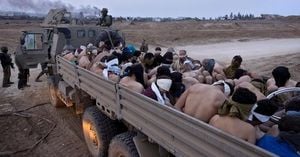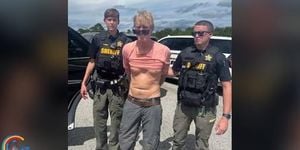Tesla has ramped up excitement and scrutiny as it moves closer to launching its much-anticipated robotaxi service, known as the Cybercab. The official reveal took place at the company’s "We, Robot" event held in Los Angeles, showcasing not just the Cybercab itself but also introducing the Robovan, another innovative transport vehicle. CEO Elon Musk has touted the Cybercab as the next step toward fully autonomous driving.
At the event, which was marked by some drama due to delays, attendees got to see the Cybercab up close. This futuristic vehicle, with a design reminiscent of Tesla's Cybertruck, features scissor-like doors and does away with conventional driving controls, appearing without steering wheels or pedals. During the event, Musk arrived driving the Cybercab, highlighting its capabilities directly.
While the Cybercab is set to carry passengers autonomously, Musk emphasized plans for its pricing, aiming for it to be around $30,000 once launched, expected by early 2027. Tesla plans to implement wireless induction charging for the vehicles, which is another step toward creating their vision of convenience and innovation.
But not all is smooth sailing for Tesla. The National Highway Traffic Safety Administration (NHTSA) has raised alarms about the marketing practices related to Tesla's Full Self-Driving (FSD) features. Recent social media posts from Tesla have been flagged by the NHTSA for potentially misleading portrayals of the FSD system’s capabilities. The agency is particularly concerned about how these posts may lead consumers to believe they can rely on the technology without driver supervision.
For example, one post highlighted how FSD helped drive a man to the hospital during a heart attack, emphasizing the technology's convenience yet implying autonomy which does not align with reality. The NHTSA’s letter to Tesla called out these communications, stating they might encourage drivers to treat the FSD as fully autonomous when it still requires active monitoring.
The agency’s scrutiny follows previous investigations and concerns over Tesla’s advertising strategies. NHTSA Division Chief Gregory Magno expressed strong disapproval, stressing the need for transparency about both the abilities and limitations of the FSD system. He stated, "Tesla’s posts may encourage viewers to see FSD as a chauffeur or robotaxi," which undermines existing safety protocols deterred by accurate technology marketing.
Currently, Tesla is under pressure to respond to these warnings, which they have until December 18, 2024, to comply with. The risk of non-compliance could see fines levied against the company, potentially reaching upwards of $135 million. It’s clear the stakes are high as the company aims to balance groundbreaking innovation with regulatory demands and consumer safety.
Musk has made bold claims about Tesla being able to demonstrate its FSD feature as safer than human-led driving by mid-2025. This confidence aligns with their timeline aimed at moving from supervised to unsupervised full autonomy—a significant leap for the industry.
Alongside the concerns raised by regulators, Tesla's event was met with mixed reactions from investors. The Cybercab's reveal resulted in stock fluctuations, dropping over 8% soon after the launch—indicating skepticism surrounding the realism of Musk's vision and the actual readiness of the technology for consumer markets.
A secondary aspect of Tesla's strategy remains its plans to allow current Tesla vehicle owners to incorporate their cars with Tesla's rideshare service, combining FSD and creating potential new revenue streams for them. This is viewed by analysts as potentially revolutionary, creating opportunities for greater vehicle utilization.
While the Cybercab signifies the ambitious path Tesla aims to take within the transportation sector, the path forward is fraught with challenges. Balancing technological advancement with regulatory compliance will be key. Given the current heightened scrutiny from the NHTSA, the future of Tesla's aspirational projects will depend on how effectively the company navigates these waters.
With the Cybercab set to enter trials and potentially reshape ridesharing, it also ensures all eyes remain on Tesla as they move forward with their plans, balancing innovation with the expected oversight from regulatory agencies.



